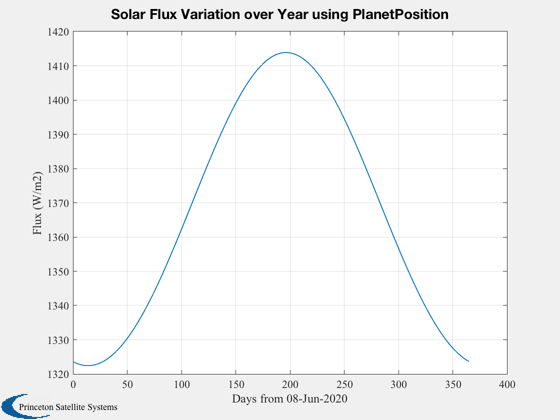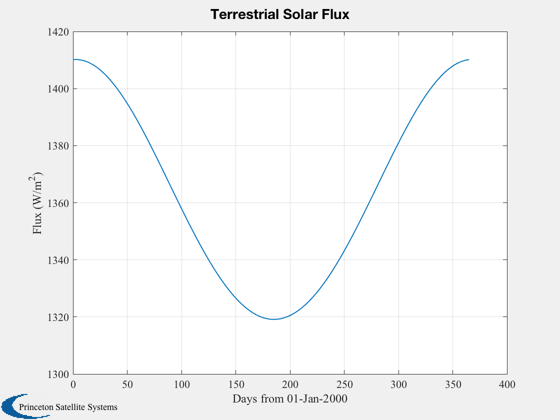Solar flux variation over Earth orbit.
Model the Earth orbit around the sun for a year and call SolarFlx, to demonstrate the variation in solar flux, which is nearly 100 W/m2. The reported flux is the flux above the atmosphere.
The same scaling law is used by TerrestrialSolarFlux, which also returns the sun unit vector in the Earth-centered (ECI) frame, but using the Almanac function SunV1 to compute the sun vector instead of PlanetPosition. The results are therefore slightly different. ------------------------------------------------------------------------- See also SolarFlx, PlanetPosition, Constant, Plot2D, Date2JD, Mag, TerrestrialSolarFlux -------------------------------------------------------------------------
%-------------------------------------------------------------------------- % Copyright (c) 2015 Princeton Satellite Systems, Inc. % All rights reserved. %-------------------------------------------------------------------------- % Since 2016.1 %-------------------------------------------------------------------------- % Get today's date jD0 = Date2JD; % Make an array of dates days = 0:1:365; jD = jD0 + days; % Earth's location over one year PlanetPosition( 'initialize', 3 ) r = PlanetPosition( 'update', jD ); % Scale into astronomical units au = Constant('au'); rMag = Mag(r)/au; % Calculate the solar flux accounting for this distance flux = SolarFlx( rMag ); % Plot tStr = ['Days from ' datestr(JD2Date(jD0),1)]; Plot2D(days,flux,tStr,'Flux (W/m2)','Solar Flux Variation over Year using PlanetPosition') % TerrestrialSolarFlux built-in demo for comparison. % In this case the year is modeled from J2000. TerrestrialSolarFlux xlabel(['Days from ' datestr(JD2Date(JD2000),1)]) %--------------------------------------
TerrestrialSolarFlux demo from J2000

